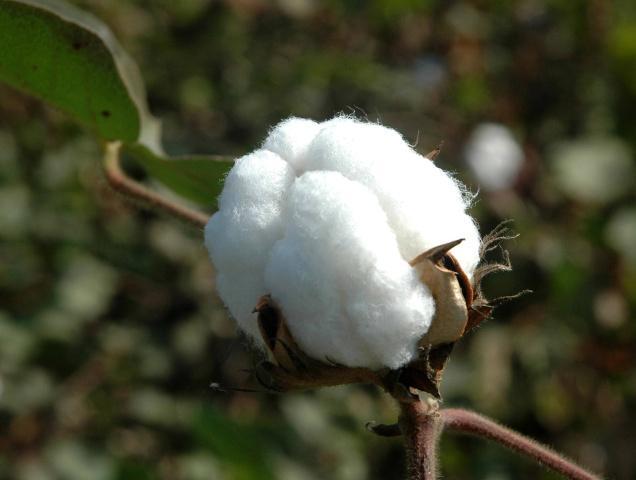
Zimbabwe’s cotton industry will remain under pressure as international lint prices continue to wane with China’s imports expected to decline in the 2014/2015 season as the Asian nation shifts to domestic cotton for national reserves.
BY TARISAI MANDIZHA
According to statistics, approximately 8% of the cotton traded in the world market is harvested in Africa. The Asian nation contributes 32% to global cotton output.
Internationally, cotton prices are above US$0,70 per pound (about US$0,35 per kg).
China’s shift to domestic cotton is set to affect local prices. Farmers have been getting an average US$0,40 per kg, an income that has threatened the viability of cotton farming in the country.
The expected decrease in prices comes amid reports that subsidised cotton from developed countries was killing the competiveness of Zimbabwean ginners.
The Cotton-to-Clothing Strategy of Zimbabwe 2014-2019 report said intense competition with subsidised cotton from other countries created lack of price competitiveness for Zimbabwe’s ginners and oil expressers.
“It is estimated that the United States of America [USA], China, India and the European Union had spent a total of US$47 billion over the last nine years to 2014 in subsidies to their cotton farmers,” it said.
- Cottco mulls expansion into textile manufacturing
- Cottco mulls expansion into textile manufacturing
- Zanu PF knives out for Wadyajena
- TIMB boss in court
Keep Reading
“These are large amounts given the small Gross Domestic Product [GDP] figures of African countries including Zimbabwe. The effect of these subsidies is to depress the international cotton price by 10% to 13%.”
It said smaller countries cannot retaliate by hiking import tariffs “as the World Trade Organisation [WTO] has suggested it as a weapon which Brazil can employ to force the USA to reduce the harmful effects of its subsidies on Brazilian cotton farmers.”
According to the report, the Doha Round of trade negotiations offer distant hope for countries such as Zimbabwe and the only conclusion seems to be that Zimbabwe together with other countries would live with this unequal market distortion.
Doha Round is the latest round of trade negotiations among the WTO members which aims to achieve major reform of the international trading system through the introduction of lower trade barriers and revised trade rules.
In a research note, MMC Capital said the cotton crop hectarage was declining in Zimbabwe as farmers shift to other crops such as tobacco due to unviable prices that are being offered by local cotton merchants.
“The local textile industry is in dire straits on the back of the shortage of working capital. Capacity utilisation in the sector is below 10% and cut-throat competition from cheap fabric imports will likely persists. The local fabric market is now dominated by imports particularly from China, Pakistan and India,” it said.
However, there are opportunities for the clothing industry if it focuses on niche quality markets rather than mass production commodity-like output.
“It has a competitive advantage locally and regionally based on delivery. The cost of distribution to the local and regional markets is the least for any competitors in the world,” the Cotton-to Clothing Strategy of Zimbabwe report said.
It said Zimbabwe should address the country’s own governance issues to give the nation renewed self-esteem and a new sense of purpose.
“An erroneous impression has grown about the quality of Zimbabwean cotton in foreign markets over the last decade of a difficult economic environment in the country. The image of Zimbabwean cotton has gone down.”
The local industry in Zimbabwe has been facing many challenges due to an influx of cheap imported commodities into the market and the textile manufacturers have been the hardest hit.
At its prime, the clothing and textile industry in Zimbabwe used to employ 24 000 people and the number has since declined to 4 000.
In his 2014 national budget, Finance and Economic Development minister Patrick Chinamasa said the agriculture sector was projected to grow by 9% in 2014, mainly driven by growth in maize (62,8%), cotton (27,8%), soya beans (26,7%) and groundnuts (56,8%), among other crops.
The cotton output has declined from 450 000 hectares in the 2011 to 2012 season, to 241 849 hectares in the 2012 to 2013 season due to fewer farmers growing the crop owing to the unviable prices that had been offered by local merchants during the previous season.
Chinamasa said cotton output was forecast to grow to 180 000 tonnes in 2014 from 140 000 tonnes in 2013 on the back of anticipated increases in local demand.
“Strategies for the revival of the textile industry and value addition combined with financing from the banking sector are also expected to boost local demand for cotton and, hence, its production,” Chinamasa said.
“To date, about 160 000 hectares have already been earmarked for contract farming for the crop, with a total targeted hectarage of 277 000 hectares at an average yield of 0, 65 tonnes.”











